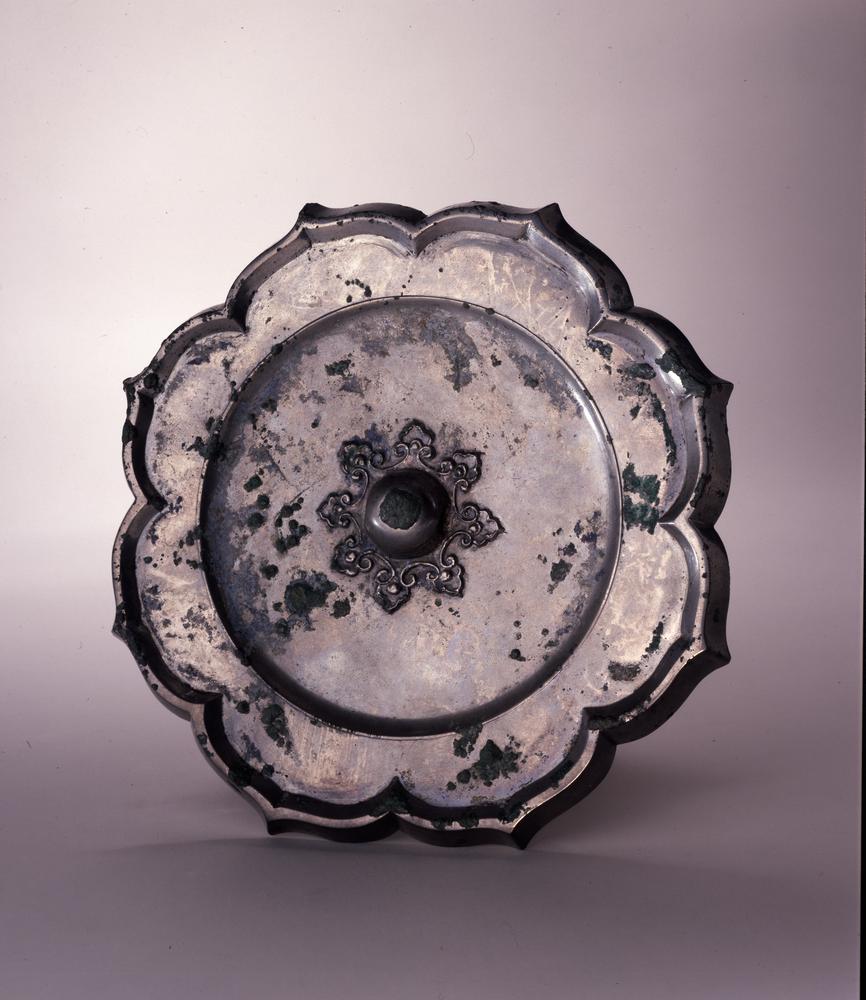Period:Ming dynasty Production date:1488-1505
Materials:porcelain
Technique:incised, glazed, painted, underglazed,
Subjects:dragon
Dimensions:Diameter: 18 centimetres Height: 3.80 centimetres
Description:
Porcelain dish with incised and green enamel decoration on a white ground. This shallow saucer-shaped dish has rounded sides and a tapering foot. Inside a sinewy five-clawed dragon among clouds in a central medallion is incised into the leather-hard clay body. The dragon, clouds and ring outlines of the roundel and rim have been painted, reserved in-the-biscuit, with a forest-green coloured enamel. Outside only the two dragons and border lines are enamelled and the incised clouds, rocks and waves between them are composed of faint incised lines. On the base is a six-character underglaze blue Hongzhi reign mark.
IMG
![图片[1]-dish BM-1984-0202.1-China Archive](https://chinaarchive.net/Ming dynasty/Ceramics/mid_00269032_001.jpg)
Comments:Harrison-Hall 2001:This combination of green enamel on a white ground was invented in the Chenghua era. A portion of a bowl with an incised dragon design and green glaze was unearthed from the Chenghua remains in Zhushan, Jingdezhen. Hongzhi dishes of this type are quite common in European collections. Another such dish is in the Baur Collection, Geneva. As well as saucer-shaped dishes, bowls were made with this decorative scheme in the Hongzhi reign, as shown by an example in the Idemitsu Museum of Art, Tokyo.
Materials:porcelain
Technique:incised, glazed, painted, underglazed,
Subjects:dragon
Dimensions:Diameter: 18 centimetres Height: 3.80 centimetres
Description:
Porcelain dish with incised and green enamel decoration on a white ground. This shallow saucer-shaped dish has rounded sides and a tapering foot. Inside a sinewy five-clawed dragon among clouds in a central medallion is incised into the leather-hard clay body. The dragon, clouds and ring outlines of the roundel and rim have been painted, reserved in-the-biscuit, with a forest-green coloured enamel. Outside only the two dragons and border lines are enamelled and the incised clouds, rocks and waves between them are composed of faint incised lines. On the base is a six-character underglaze blue Hongzhi reign mark.
IMG
![图片[1]-dish BM-1984-0202.1-China Archive](https://chinaarchive.net/Ming dynasty/Ceramics/mid_00269032_001.jpg)
Comments:Harrison-Hall 2001:This combination of green enamel on a white ground was invented in the Chenghua era. A portion of a bowl with an incised dragon design and green glaze was unearthed from the Chenghua remains in Zhushan, Jingdezhen. Hongzhi dishes of this type are quite common in European collections. Another such dish is in the Baur Collection, Geneva. As well as saucer-shaped dishes, bowls were made with this decorative scheme in the Hongzhi reign, as shown by an example in the Idemitsu Museum of Art, Tokyo.
© Copyright
The copyright of the article belongs to the author, please keep the original link for reprinting.
THE END





